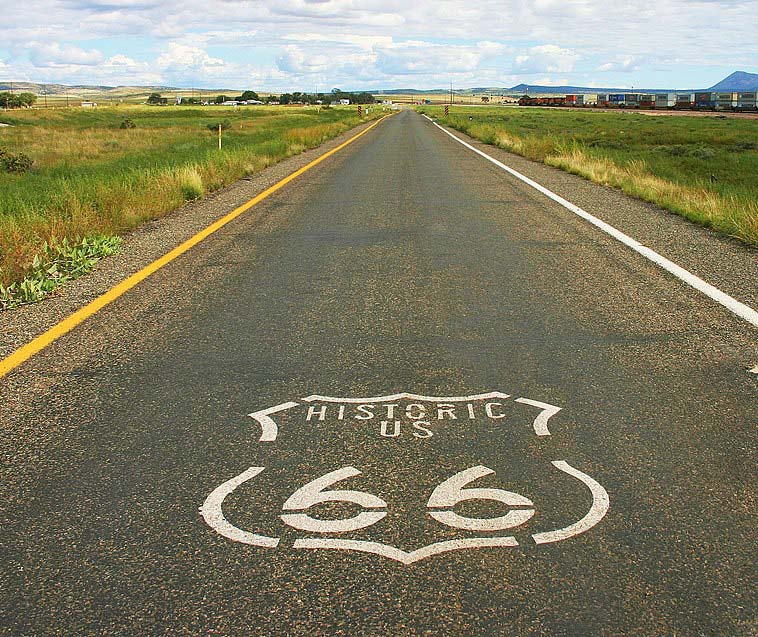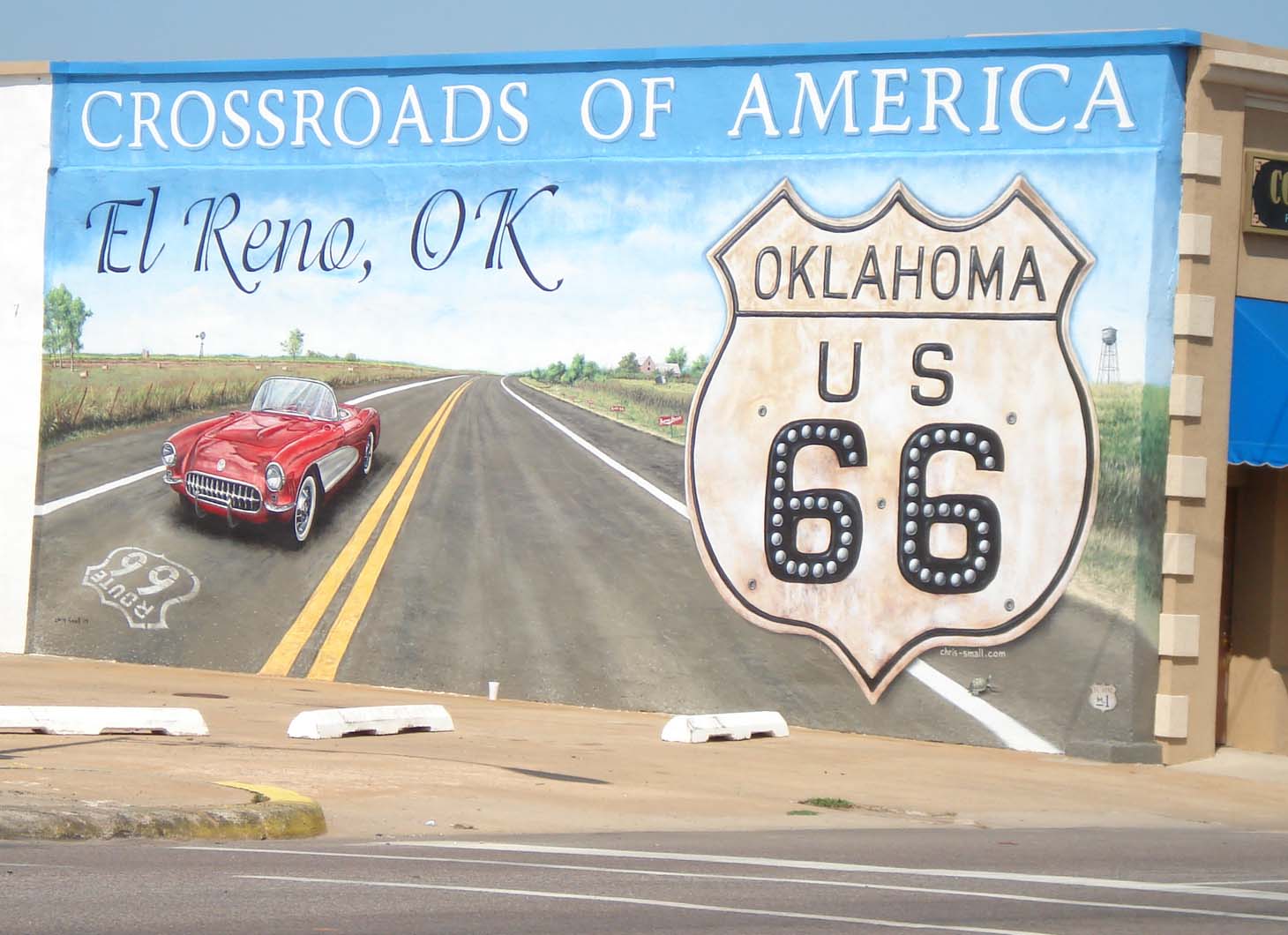Older than “66,” the Mother Road travels on
July 10-16, 2023
By Jay Edwards
Our nation’s most famous road will be 100-years old in 2026 and the eight states it traverses have begun preparations, with restored neon signs, widening of shoulders to make it safer for cyclists and even the additions of charging stations for electric cars.
“The world still comes to Route 66,” said Michael Wallis, author of “Route 66: The Mother Road,” who was appointed last year by President Joe Biden to the Route 66 Centennial Commission.
For the nation’s iconic and longest landmark, the beginning actually came earlier than a hundred years ago, to the middle of the 19th century, when a U.S. Navy Lieutenant named Edward Beale was instructed by the War Department to map out and build a trade route from Ft. Smith to Los Angeles. It was called Beale’s Wagon Road and would become the path for the Transcontinental railroad in the early 1880s, then U.S. Route 66 in1926 and finally Interstate 40 in 1978.
Beale, a veteran of the war between the U.S. and Mexico, who had as friends Buffalo Bill and Kit Carson, had made a name for himself in1848 as one of the first men to bring gold from California back east, inspiring the gold rush. He knew the way west.
As the automobile replaced the covered wagon, this new mode of travel soon became available and affordable through mass production. Americans longed for new destinations and all that was needed were roads for their new wheels. But there wasn’t anything close to resembling a highway infrastructure, only dirt paths, which would soon become a sprawling network of marked routes known as auto trails.
One of those was Yellowstone Trail, which completed its first 25 miles in 1912. It would eventually expand to become the first transcontinental highway through the upper U.S., stretching from Washington State through Massachusetts. Another was the Albert Pike Trail, which ran from Hot Springs to Colorado Springs.
In 1913 an entrepreneur named Carl Fisher conceived and began planning what would become the most well-known of those early auto trails with the Lincoln Highway, which would eventually connect New York City with San Francisco. Fisher estimated the 3,400-mile paved road would cost $10 million.
In 1919, not long after the end of the planet’s first world war, the U.S. Army undertook its first transcontinental motor convoy along the Lincoln Highway. One of the young officers on that trip was a lieutenant colonel named Eisenhour, who, decades later, after advances in his career had gone as far as they could, credited his 1919 journey as being part of the motivation behind the passing of the Federal-Aid Highway Act of 1956. Ike recalled, “The old convoy had started me thinking about good two-lane highways... the wisdom of broader ribbons across our land.”
Another early believer in better roadways was Cyrus Stevens Avery of Tulsa. Born in Stevensville, Pennsylvania in 1871, Avery migrated with his family to Missouri when he was ten, and 20 years later made his way to the Oklahoma Territory, where he eventually started an oil and gas company in Tulsa. Avery believed that the way to prosperity for Oklahoma and Tulsa would come over an interstate highway system, and he became active in different organizations that promoted good roads, including the Albert Pike Highway Association and the Ozark Trail Association, whose Ozark Trail Highway ran through Oklahoma in the 1920’s and would eventually be part of the U.S. highway that ran from Chicago to Los Angeles known as Route 66.
Congress began funding roadways after passage of the Federal Aid Road Act of 1916, and government efforts began towards a national road grid five years later. The U.S. Numbered Highway System was established in 1926, and soon after the U.S. Highway 66 Association was formed, to promote travel and paving the entire route. The first big publicity event took place in 1928 with the “Bunion Derby,” a footrace on Route 66 from LA to Chicago, then on to New York City from there.
The winner of the race and its $25,000 prize was Andy Payne, who was a member of the Cherokee Nation from Foyil, Oklahoma. Payne completed the 3,423.5 journey in 573 hours, four minutes and 34 seconds. He used the prize money to pay the mortgage on his father’s farm.
Over the years Route 66 became known as the “Main Street of America,” because of the many small towns, motels, gas stations and diners it took travelers through and by.
During the Great Depression it became a road of last hope for tens of thousands of Americans who dreamed of a better life in the west. To them it was, as Steinbeck wrote, “The Mother Road.”
The popularity of traveling Route 66 grew tremendously over the decades after World War II, as vacationers loaded up the family car and headed out to new sights from Illinois to California and the six states in between. Family vacations soon were an all-American tradition and it wasn’t long until a faster way to get where they were going became the objective, which eventually led to U.S. Highway 66 becoming Historic Route 66. By the late 1960’s, most rural sections of Route 66 had been replaced by Interstate 40 across New Mexico. This was happening in the other states it wound through as well. To the larger, more well-known cities like St. Louis, Tulsa, Albuquerque and Flagstaff, it didn’t matter much, but to others the changes took a toll.
Today, the best way to travel the old route is slow and easy, with moments to take in the history of the towns and their sights that rest along an American treasure, who someone said of, “That which was once the way to so many destinations, has become the destination itself.”
A few places to stop on 66
The Abou Ben Adhen Shrine Mosque is an Arabesque theater in Springfield, Missouri built in 1923. There is a plaque that tells of Wild Bill Hickok killing another gambler named Dave Tutt because Tutt was bragging about a watch he’d won from Wild Bill.
In Clinton, Oklahoma stop at the Route 66 Museum for displays of the massive Dust Bowl Migrations from the 1930’s. Spend a night across the street at the Trade Winds Inn. Elvis loved it so much he stayed there four times.
Cadillac Ranch in Amarillo where 10 rusting Cadillacs are buried nose down in the dirt. Hey, it’s art.
Tucumcari, New Mexico has more vintage neon signs and retro motels than anywhere on Route 66. Notables are the Blue Swallow Motel and Roadrunner Lodge.
Just north of Kingman, Arizona sits the ghost town of Oatman, where burros still roam freely. Oatman was nothing but a small mining camp until it exploded in 1915 when two prospectors discovered a $10 million gold vein. The population grew to 3,500 in a year and by 1941 over $40 million ($800 million in today’s dollars) had been mined. The name Oatman comes from Olive Oatman, a pioneer girl from Illinois who was captured by Indians after her family was massacred during their journey west in 1851. She was released at Fort Yuma in 1856.
Those are just a few stops along the old road. There are many more. This summer consider a trip down Route 66 for your family vacation. The poet said it best. “I took the one less traveled by, and that has made all the difference.”




